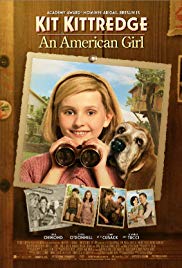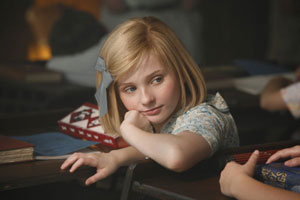Discussion Questions Relating to Ethical Issues will facilitate the use of this film to teach ethical principles and critical viewing. Additional questions are set out below.
RESPECT
(Treat others with respect; follow the Golden Rule; Be tolerant of differences; Use good manners, not bad language; Be considerate of the feelings of others; Don’t threaten, hit or hurt anyone; Deal peacefully with anger, insults, and disagreements)
1. Remember when the ladies at Mrs. Kittredge’s garden party were appalled that she gave food to the hobos? How did the general community treat the hobos? Why do you think they acted the way they did?
Suggested Response:
The community feared the hobos. They blamed them for crimes, without ever being entirely sure the hobos had committed them. There are many reasons why they acted this way. One was that the hobos were a reminder of how tough it was to make a living, to provide food and shelter for their families. The hobos were a constant reminder that anyone could wind up homeless. Another reason might be snobbery. The upper class just didn’t want to see poverty right in their faces. The ladies at the garden party were snobby toward the hobos and were surprised that Mrs. Kittredge treated them with anything other than disrespect. A third reason was that the hobos’ poverty and homelessness made them different from the other people in the town; people often fear those who are different.
2. Who demonstrated respect in this film?
Suggested Response:
The Kittredges are the obvious answer. Ask students about minor characters who showed respect for others: Examples are the teacher who organized the soup kitchen field trip; the people who ran the soup kitchen; some of the boarders; and some of Kit’s classmates and friends.
TRUSTWORTHINESS
(Play by the rules; Take turns and share; Be open-minded; listen to others; Don’t take advantage of others; Don’t blame others carelessly)
3. By taking in strangers to help pay the bills, Kit and her mother had to trust themselves, and their new housemates. Were they right to do so?
Suggested Response:
The Kittredges did what they had to do. They had to trust that this was the right choice. The only other option was to lose everything they had. Kit’s mother decided to do what she thought was best for her family, and it turned out that she was correct. Not only were they able to weather the hard economic times, but they made lots of new friends, and changed the way some people thought about hobos.
4. How did Jefferson (the magician) use the trusting nature of the Kittredges to his advantage?
Suggested Response:
By being kind, charming and entertaining, he got himself into the Kittredge household. Knowing that Will and Countee helped out around the house, and knowing that hobos were being suspected in a number of robberies, he figured he could set up Will as a thief and play on the suspicions of the other members of the household and the community. By not acting suspicious, he managed to maintain the Kittredges’ trust, up until Kit and her friends found out what was going on.
CITIZENSHIP
(Do your share to make your school and community better; Cooperate; Stay informed; vote; Be a good neighbor; Obey laws and rules; Respect authority; Protect the environment)
5. Do we have a responsibility to help people in our community that have fallen on hard times? What are some of the ways we can help?
Suggested Response:
Yes, we do. As members of society, we need to help other people out. Think of the Golden Rule: treat others as you would like to be treated. If you were struggling, wouldn’t you want someone to help you out? Some of the ways that we can help include volunteering our time, organizing food drives, donating money, and encouraging people to treat everyone with respect. See the Projects and Activities section for more ideas.
CARING
(Be kind; Be compassionate and show you care; Express gratitude; Forgive others; Help people in need)
6. What are some ways that Kit and her family showed other people that they cared about them?
Suggested Response:
Kit and her family showed that they cared by letting Will and Countee do work around the house in exchange for food and clothes. They worked with what they had to make the best out of the situation. Kit also showed that she cared by letting her friends into her Tree House Club, welcoming everyone as her friend, and defending Will and Countee.



